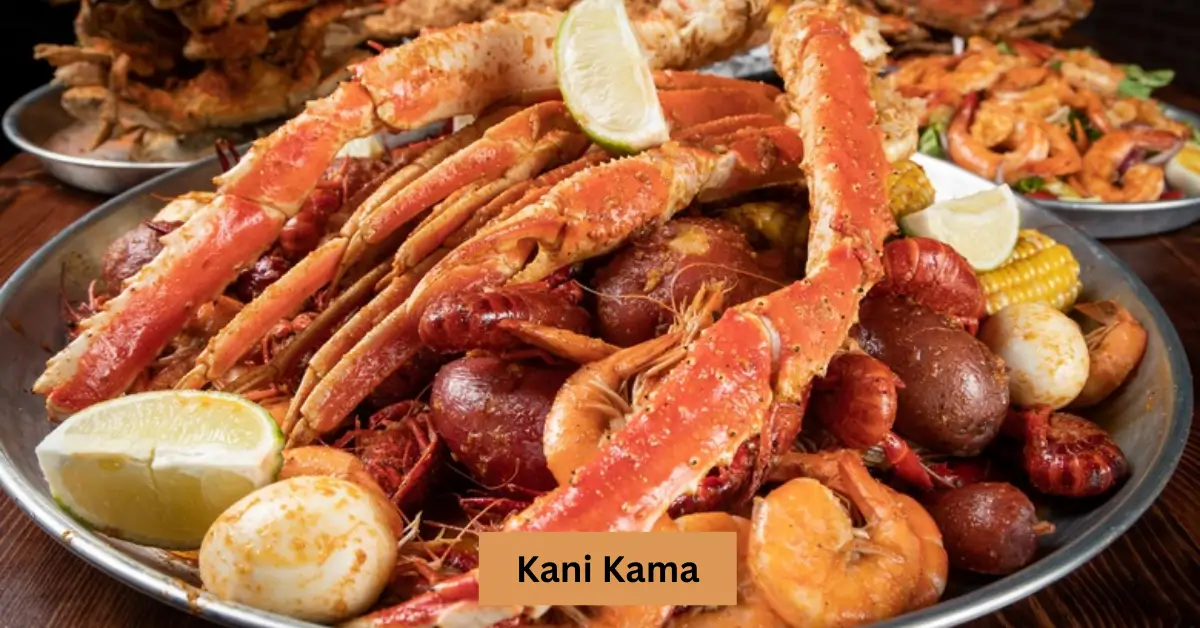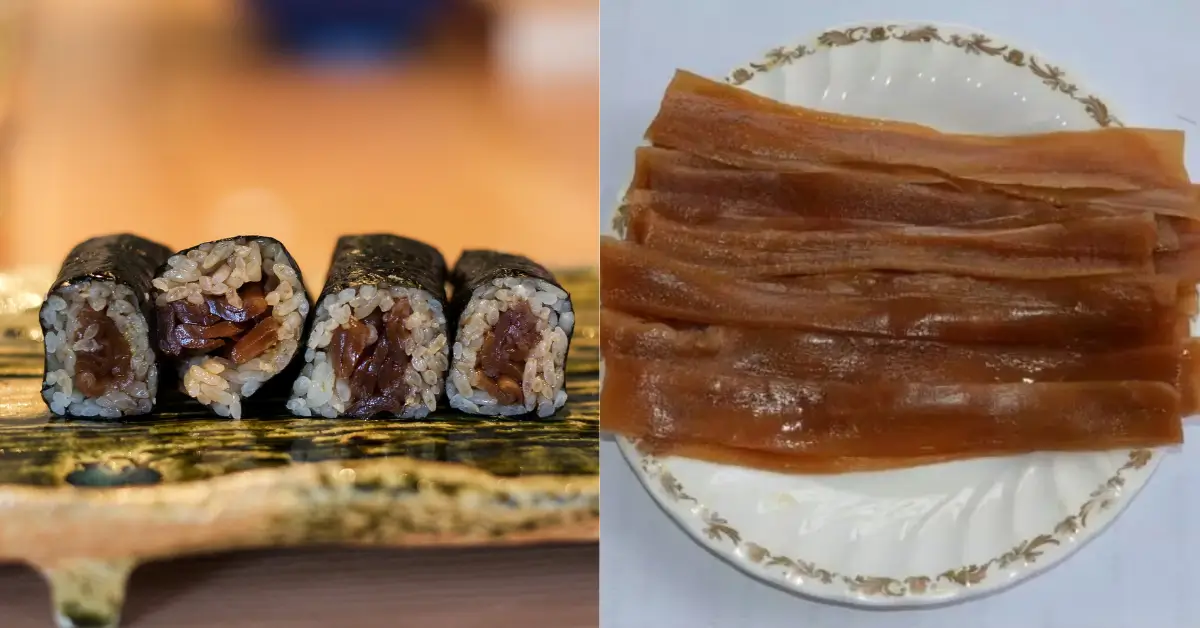Kani Kama, a staple in Japanese cuisine and a favorite in global kitchens, is a culinary marvel that brings the taste of crab without the cost. Known as imitation crab, this seafood substitute has earned its place in dishes ranging from sushi rolls to salads. With its delightful texture and versatility, Kani Kama continues to excite taste buds and inspire chefs worldwide.
Whether you’re a foodie or someone exploring healthy alternatives, Kani Kama offers a flavorful journey. Let’s dive into its origins, preparation, benefits, and more to understand why it remains a cherished ingredient in both traditional and modern recipes.
What is Kani Kama?
Kani Kama, often called imitation crab, is made from surimi—a finely processed fish paste crafted from white fish like pollock. It mimics the taste, texture, and appearance of real crab meat, offering a cost-effective and widely accessible alternative.
Recognizable by its red-and-white coloring, Kani Kama is often shaped into sticks or shredded into flakes. Its subtle seafood flavor and adaptability make it a star in dishes like sushi, salads, and appetizers, appealing to seafood lovers and skeptics alike.
The Origins and Cultural Significance of Kani Kama
Kani Kama’s origins trace back to Japan in the 1970s, where food scientists developed surimi to address the growing demand for affordable seafood. Rooted in centuries-old techniques of fish preservation, surimi transformed into a global phenomenon, thanks to its versatility and affordability.
In Japanese culture, Kani Kama represents innovation and resourcefulness, blending traditional methods with modern technology. Today, it is a symbol of culinary adaptability, embraced in diverse cuisines worldwide for its ability to enhance both flavor and texture.
How Kani Kama is Made: Ingredients and Process
The making of Kani Kama begins with surimi, a paste derived from white fish like pollock. The fish is deboned, washed, and minced into a fine texture. Starch, egg whites, sugar, and salt are added to create the desired consistency.
Also Read: Kampyo: The Essential Guide to Japan’s Dried Gourd Ingredient
To achieve its signature crab-like appearance, food coloring and natural flavorings are introduced. The mixture is then molded, cooked, and cooled into sticks or flakes. This meticulous process ensures a product that is not only delicious but also visually appealing.
Nutritional Profile and Health Benefits of Kani Kama
Kani Kama is a low-calorie, low-fat alternative to traditional crab meat, making it an excellent choice for health-conscious individuals. Packed with protein, it supports muscle health and keeps you feeling full longer.
However, it’s essential to note that Kani Kama can be high in sodium due to added flavorings. It’s also a gluten-free option, depending on the brand, and can cater to various dietary needs. Always check the label for allergen information.
Popular Dishes Featuring Kani Kama
- California Rolls: A sushi classic, these rolls feature Kani Kama as a star ingredient, paired with avocado and cucumber.
- Seafood Salads: Shredded Kani Kama adds a delightful texture and flavor to refreshing salads.
Other popular uses include crab cakes, pasta dishes, and even as a topping for soups, showcasing its versatility in both traditional and creative recipes.
Differences Between Kani Kama and Real Crab Meat
While Kani Kama replicates the taste and texture of real crab, there are notable differences. Real crab meat boasts a richer flavor profile and higher nutritional content, including omega-3 fatty acids.
Kani Kama, on the other hand, offers affordability and extended shelf life. Its consistent taste and texture make it a reliable choice for large-scale cooking and meal prep.
Tips for Selecting and Storing Kani Kama
When purchasing Kani Kama, look for fresh, vacuum-sealed packages to ensure quality. Check the label for allergen information and sodium content.
Store Kani Kama in the refrigerator and consume it within the recommended time frame. If unopened, it can last up to a month; once opened, use it within a few days for optimal taste and safety.
Common Uses of Kani Kama in Global Cuisines
Kani Kama’s adaptability makes it a beloved ingredient in cuisines beyond Japan. In the United States, it’s a staple in sushi rolls and seafood salads. In European dishes, it’s often incorporated into pasta and casseroles.
This imitation crab meat has also found a home in street foods, with vendors using it as a quick and flavorful filling for wraps and sandwiches, catering to on-the-go lifestyles.
Is Kani Kama Suitable for Special Diets?
Kani Kama can cater to various dietary needs. It is often gluten-free, making it a safe option for those with gluten sensitivities. Additionally, its low-calorie content appeals to weight-conscious individuals.
However, it’s not suitable for vegans, as it contains fish and often egg products. Always check labels to ensure compatibility with specific dietary requirements.
Environmental Impact of Kani Kama Production
The production of Kani Kama supports sustainable seafood practices by utilizing less desirable fish species like pollock. This reduces waste and helps manage overfishing of more popular species.
However, the environmental impact also depends on the fishing practices and sourcing methods used. Consumers can opt for brands that prioritize sustainable and eco-friendly operations.
Recipes You Can Try Using Kani Kama
- Kani Salad: Combine shredded Kani Kama with cucumber, carrots, and a creamy dressing for a refreshing side dish.
- Kani Sushi Rolls: Roll Kani Kama with rice, nori, and fresh vegetables for a homemade sushi experience.
Experiment with Kani Kama in soups, stir-fries, and even dips to explore its culinary potential.
The Role of Kani Kama in Modern Seafood Markets
Kani Kama has revolutionized the seafood market by providing an affordable, accessible alternative to crab meat. It supports budget-friendly meal options without compromising on taste or quality.
Its popularity continues to grow as consumers seek versatile and convenient ingredients. As a result, Kani Kama remains a cornerstone of innovation in the global seafood industry.
Final Thoughts
Kani Kama exemplifies the fusion of tradition and innovation, bringing the taste of the sea to your plate. Its versatility, affordability, and flavor make it a must-have for seafood enthusiasts and home cooks alike.
Whether you’re crafting sushi rolls or exploring new recipes, Kani Kama is a dependable and exciting ingredient. Embrace its potential and elevate your culinary creations with this delightful imitation crab meat.
Also Read: Fauxmoi Explained: Inside Reddit’s Leading Gossip Community
FAQs
Is Kani Kama gluten-free?
Many brands of Kani Kama are gluten-free, but always check the label to confirm.
Can vegetarians eat Kani Kama?
No, Kani Kama contains fish and often egg products, making it unsuitable for vegetarians.
How long does Kani Kama last in the fridge?
Unopened Kani Kama can last up to a month; once opened, consume within 2–3 days.
What’s the difference between surimi and Kani Kama?
Surimi is the fish paste used to make Kani Kama, while Kani Kama refers to the final imitation crab product.
Is Kani Kama healthy?
Yes, Kani Kama is low in calories and fat but can be high in sodium. Consume it in moderation as part of a balanced diet.







